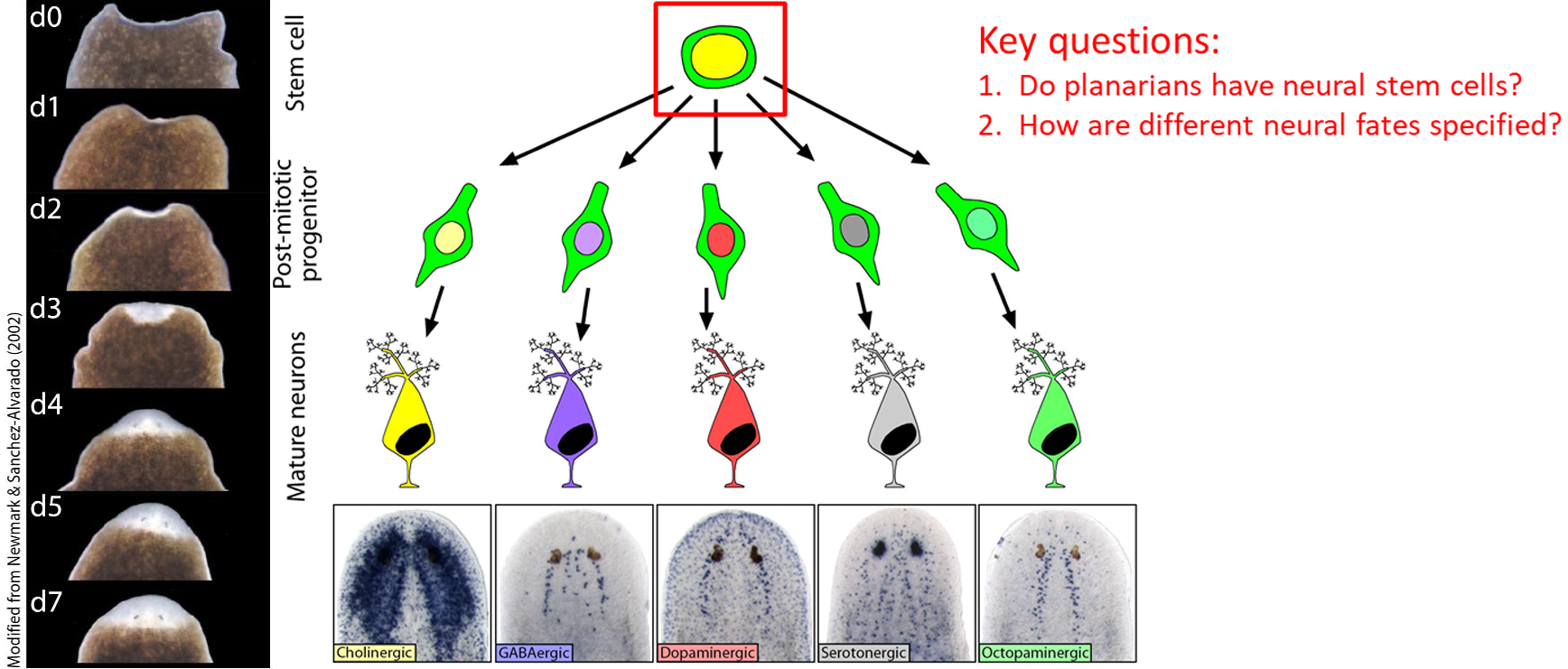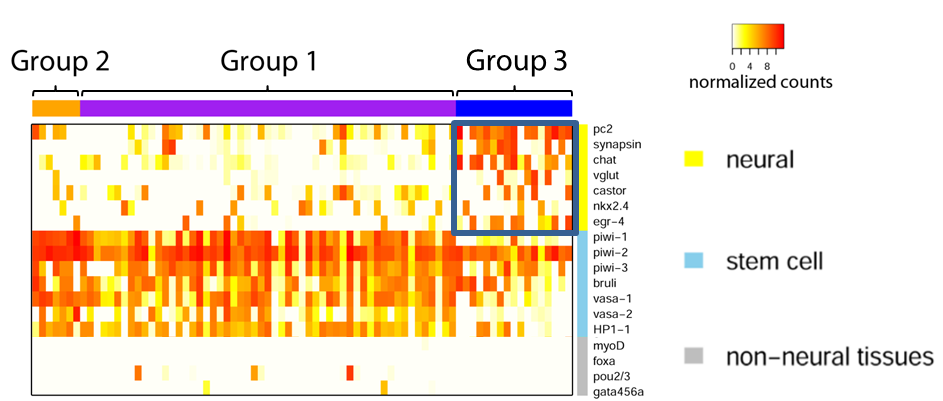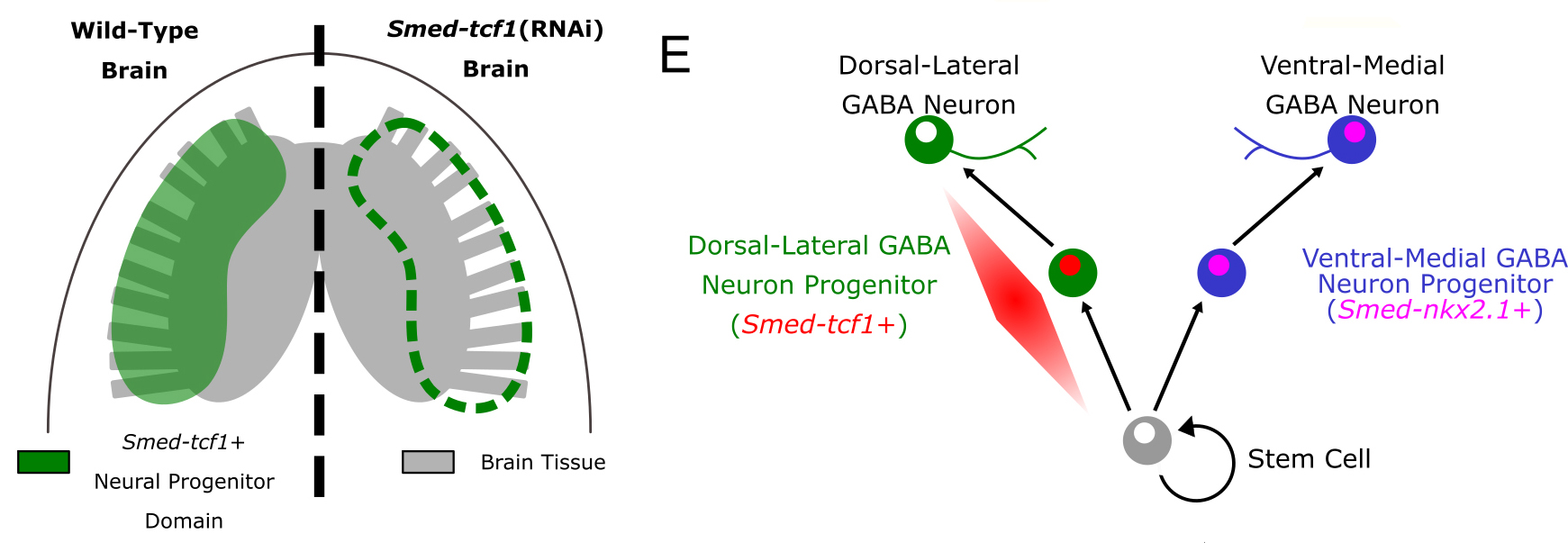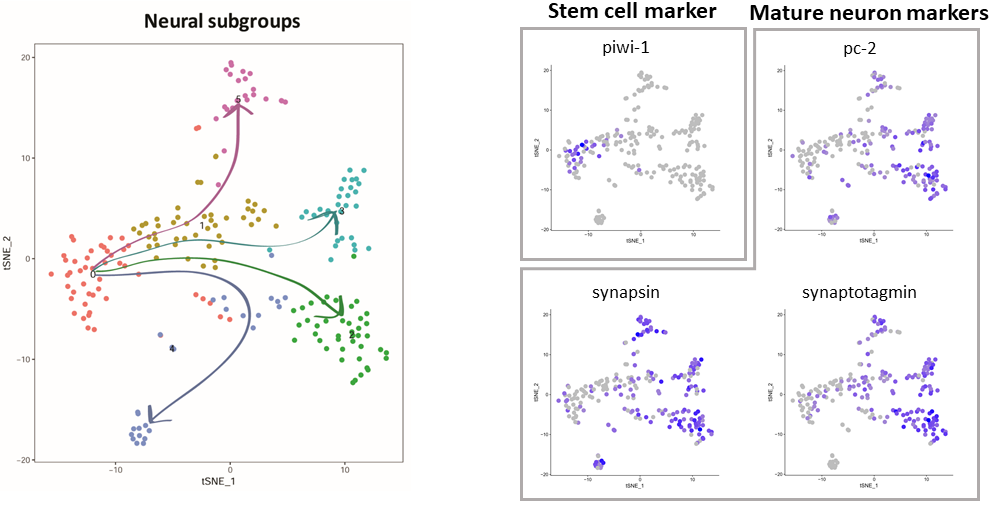
Do planarians have neural stem cells?
To tackle this question, we have turned to single-cell RNA sequencing
(scRNAseq). We have found that there exists a type of stem cell in
planarians that has neural character by scRNAseq (below). We are now
working on identifying the transcription factors that specify the
neural-biased stem cell.

Do planarians use homologs of key transcription factors used in embryonic neural development in other model systems to accomplish neural regeneration?
We have performed RNAi screens on over 200 transcription factors to identify ones that direct the specification or patterning of neural subtypes. We have uncovered many interesting factors, but importantly, there appears to be two major pathways for a new neuron to integrate into the brain. Either a cell is going to be ventral medial or dorsal lateral. We have found that a tcf homolog, tcf-1, specifies new neurons to a dorsal lateral fate while arx and nkx2 homologs specify neurons to ventral medial fates. We are now combining RNAi phenotypes with the scRNAseq data to computationally predict routes of differentiation, which we then test in vivo.

We are now combining RNAi phenotypes with the scRNAseq data to
computationally predict routes of differentiation, which we then test in
vivo.

How do new neurons find their synaptic partners in the old tissue?
Little is known about this biology in planarians, so we are performing RNAi screens of candidate molecules. In addition, this question can be addressed in the zebrafish model of spinal cord regeneration. Stay tuned to what we find out!

